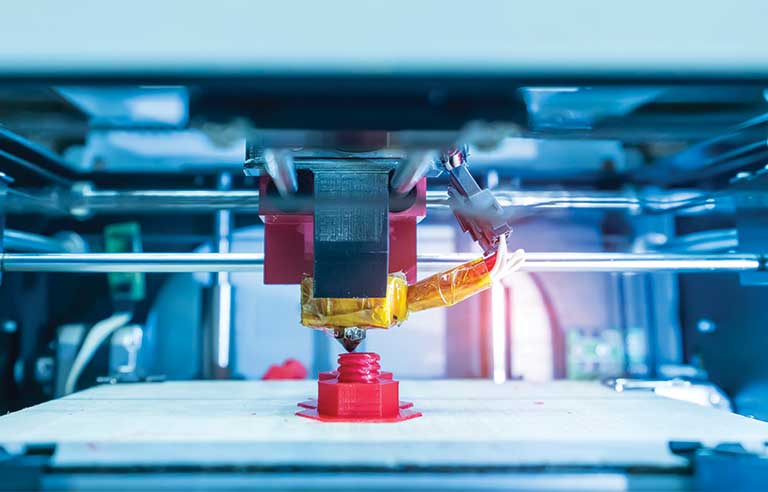
3D Printing Introduction
3D printing can be as the rising star in manufacturing industry. 3D printing is a process for making a physical object from a three-dimensional digital model, typically by laying down many successive thin layers of a material. It brings a digital object (its CAD representation) into its physical form by adding layer by layer of materials.
It offers a full spectrum of capabilities for the product of parts and products in different materials. 3D printing service evaluation is an important guarantee for printing quality and printing success rate. It is a parallel design and manufacturing technology that integrates materials, structures, and functions. It has wide applications in industry, medicine, and education.

Types of 3D Printing
There are different methods in 3D printing available, such as inkjet printing, and selective laser sintering, DLP (digital light processing), and stereolithography. This technique has been tried to produce different scaffolds.
SLA
Stereolithography (SLA) is widely recognized as the first 3D printing process. It is a laser-based process that works with photopolymer resins, that react with the laser and cure to form a solid in a very precise way to produce very accurate parts.
SLS
A laser sinters the particles of a polymer power, fusing them together and building parts layer by layer. SLS is a new high-end method that has been primarily used for rapid prototyping and small batch production of components.
Advantages of 3D Printing
Concrete 3D printing is an emerging technology that prints structures rapidly, reducing labor, and wastage of material.
- It allows for mass customization. It has the ability to personalize products according to individual needs and requirements.
- For low to medium volume applications, industrial 3D printing can eliminate the need for tool production. Therefore, the costs, lead times and labor associated with it.
- 3D printing is also emerging as an energy-efficient technology that can provide environmental efficiencies in terms of both the manufacturing process itself.


Applications of 3D Printing
3D printing is an emerging versatile technology for a wide range of applications. Not only can it fabricate membranes, but it also has great potential for membrane spacer fabrication as flow channels.
3D printing is widely used in such sectors as industry, medical, sports and education with the rapid development of 3D printing technology and continual breakthrough of new material technology.

Materials
There is now a wide variety of different material types, that are supplied in different states (powder, filament, pellets, granules, resin etc).
Specific materials are now generally developed for specific platforms performing dedicated applications (an example would be the dental sector) with material properties that more precisely suit the application.